Home » Other Articles » Going Loco Index » Going Loco - December 2022 - Going Loco - December 2022
Going Loco - December 2022
FRIDAY 16 DECEMBER
A Silly Seasonal Symphony
With hearty gusto (whatever that is) let us sing the songs of the season! My choice of lyrics though ….
We Three Kings (of Swindon Works)
Verse 1
We three kings of Swindon are,
Bearings oiled we travel afar,
Through the nation,
Snow Hill Station,
Following yonder Star
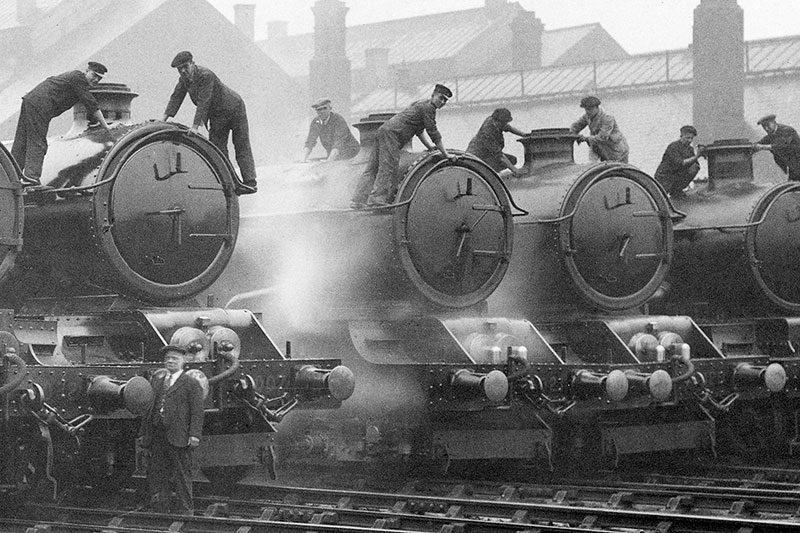
Three Kings being polished at Swindon in the early 1930s
Chorus
O Star of Churchward, Star of Knights,
Star with copper shining bright,
Westward leading,
Brass is gleaming,
Guide us to our shed tonight.
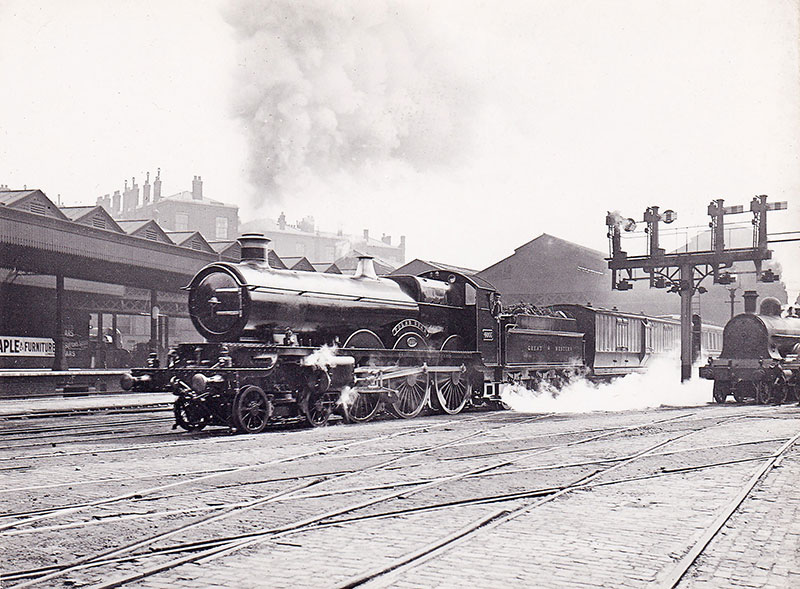
Star of Churchward, No 4005 Polar Star at Euston station during the locomotive exchange with the London & North Western Railway of 1910
Verse 2
Before the Kings at Paddington reign,
Castles built again and again,
Kings for Ever,
Going never,
West on a Cornish train.
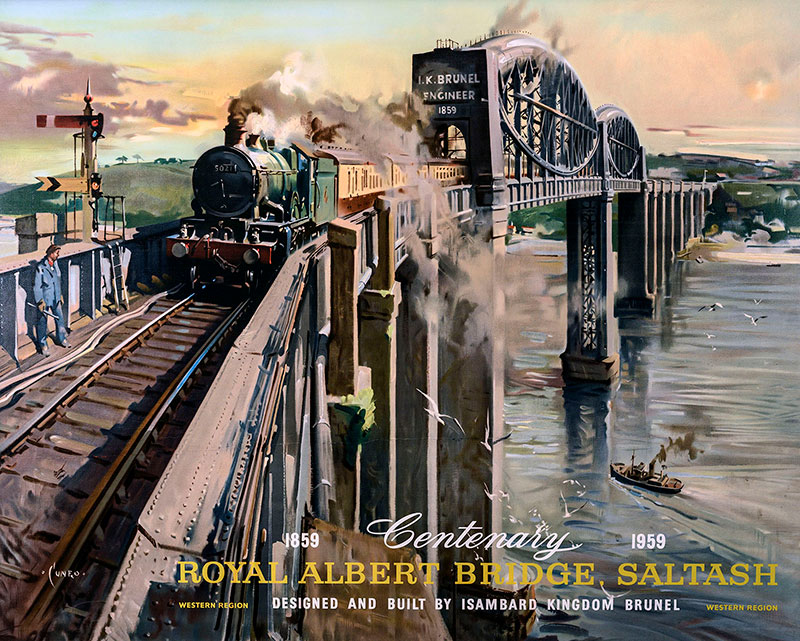
The famous painting by Terence Cuneo, featuring a Castle class locomotive crossing the Royal Albert bridge at Saltash. In GWR and BR days Kings were never permitted, because of their weight, to cross the bridge into Cornwall
Chorus
O Star of Churchward, Star of Knights,
Star with copper shining bright,
Westward leading,
Brass is gleaming,
Guide us to our shed tonight.

Star of Churchward, No 4006 Red Star heads an express through Southall
Verse 3
Saints were built to Atlantic design,
To beat de Glehn on a western line,
Pressure raising,
Crews are praising,
Engine is mighty fine!
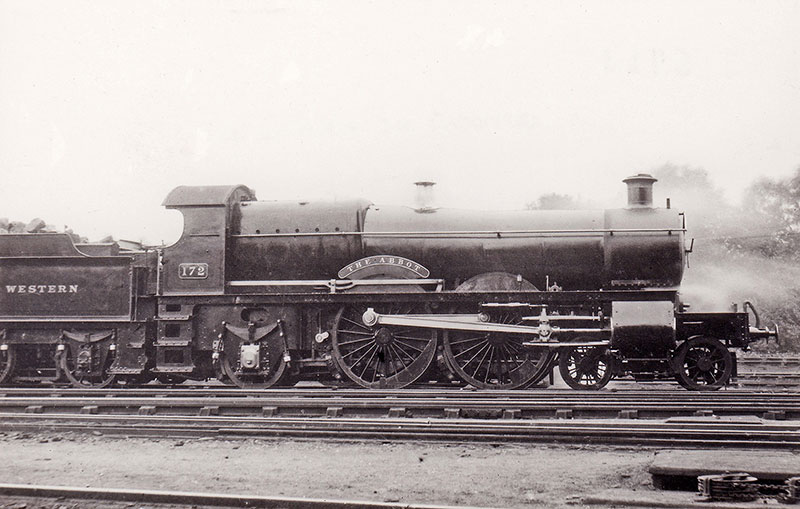
No 172 The Abbot as a 4-4-2 (Atlantic). The locomotive was later rebuilt as a 4-6-0 and renumbered 2972
Chorus
O Star of Churchward, Star of Knights,
Star with copper shining bright,
Westward leading,
Brass is gleaming,
Guide us to our shed tonight.
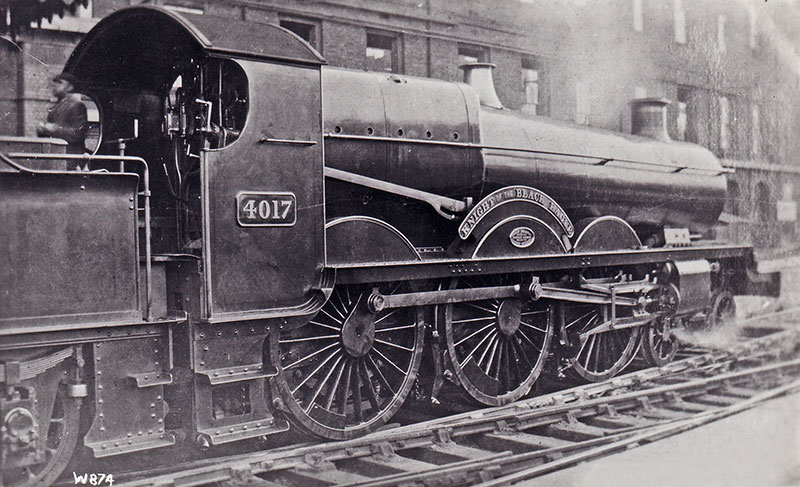
Knight Star, No 4017 Knight of the Black Eagle, a Prussian order of chivalry. The name was replaced by Knight of Liège on the outbreak of war in 1914
Verse 4
A Twenty Eight had freight to tame,
One thousand tons – a difficult game,
No vacation,
Consolidation,
Number without a name.
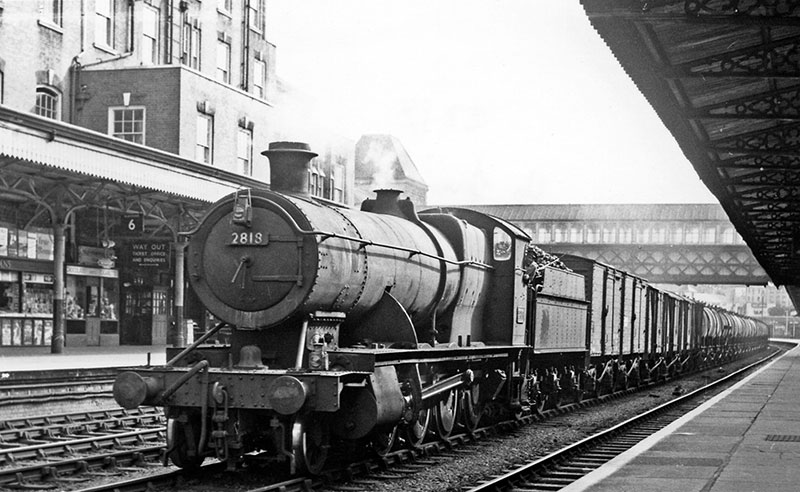
No 2818, a 2-8-0 (Consolidation) goods engine photographed by Ben Brooksbank at Newport in August 1963. The locomotive is now preserved at the Steam Museum in Swindon
Chorus
O Star of Churchward, Star of Knights,
Star with copper shining bright,
Westward leading,
Brass is gleaming,
Guide us to our shed tonight.
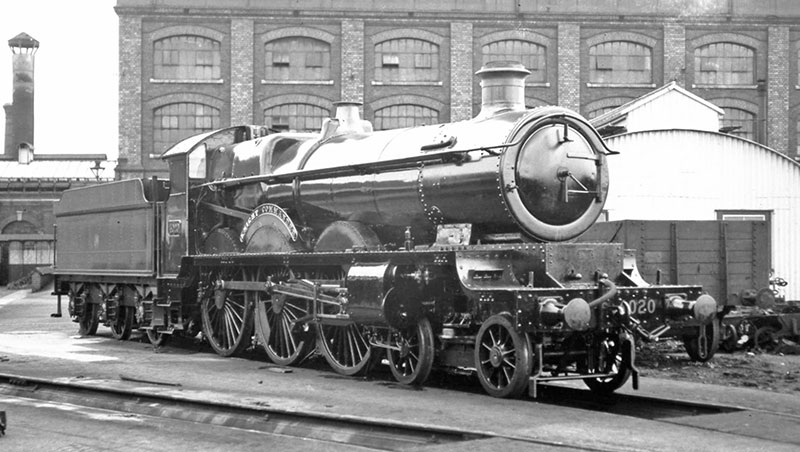
Knight Star, No 4020 Knight Commander at Swindon Works in 1939
Verse 5
In nineteen hundred and forty eight,
The company, it met its fate,
Didcot serving,
Still preserving,
Show that the West was Great!
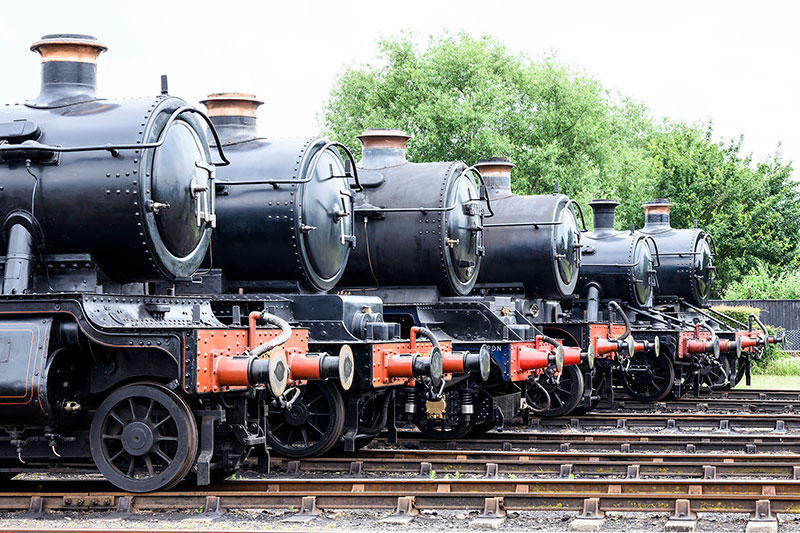
A line up of Great Western Railway locomotives at Didcot Railway Centre
Chorus
O Star of Churchward, Star of Knights,
Star with copper shining bright,
Westward leading,
Brass is gleaming,
Guide us to our shed tonight.

Knight Star, No 4014 Knight of the Bath at Old Oak Common in June 1932
Well, that is enough of that quite frankly. I'm no poet and I sure do know it. Can any of you out there in internet land come up with better verses than mine?* If so, let's see them! I don't think this is in any way a new idea – I am sure I've seen something similar somewhere before but I can't think where!
It's about that time in the year where I hang up my scribbling stick for Christmas and take a rest until the new year. I need to say thanks yet again to the rest of the Going Loco Team. To Leigh, Ali and Harry – fact checkers extraordinaire. To Drawings Kev for his insights from the drawing archive and a dose of No 3650 this year too! To Phil for keeping us up to date with No 1466. To Robert for his Internet wizardry getting all this up on the website and finally to Photo Frank who has been fact checker, English Checker and purveyor of amazing pictures from both the archive and his own lens. Thanks to everyone else who has contributed in any way, large or small, to making Going Loco happen.
The Going Loco team also have to say thank you to you. There wouldn’t be much point in writing it if you didn't want to read it! Thanks for sticking with us – the kind comments on Facebook are always appreciated by us all. On behalf of my friends in the Locomotive Department at Didcot, we wish you all a very happy Christmas and a prosperous and peaceful New Year.
All the best,
Drew
*Well, yes, clearly you can!
FRIDAY 9 DECEMBER
Last week's blog made a connection between those great steam locomotive powerhouses of Churchward and de Glehn. I have alluded to the history several times, but de Glehn was a major influence in several areas of Swindon practice after the coming to power of George Jackson Churchward. We all know that Churchward became Chief Mechanical Engineer of the Great Western Railway in 1902. So who was this de Glehn guy and how did he hold so much sway?
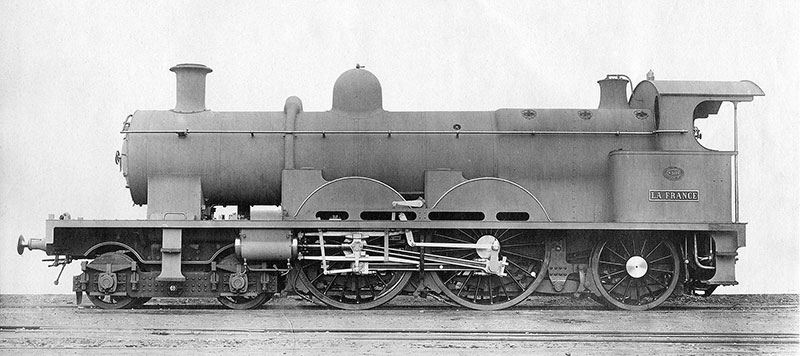
A works photograph of La France before she was delivered to the GWR
Alfred de Glehn wasn't who he made out he was – from a certain point of view.* He was actually born as one of 12 children to a Prussian nobleman by the name of Robert von Glehn. His estates were in Tallinn in Estonia, so in which grand European vista was this nobleman of rarefied DNA born? Sydenham. Yep. Robert had fallen in love with and married a Scottish lady and had moved to Sydenham in London. This was not to Alfred's detriment culturally however. His parents had great artistic and engineering figures of the age as friends. Jenny Lind, the opera singer, musician and engineer George Grove, and Arthur Sullivan, one half of the team which brought us the Gilbert and Sullivan Savoy Operas.
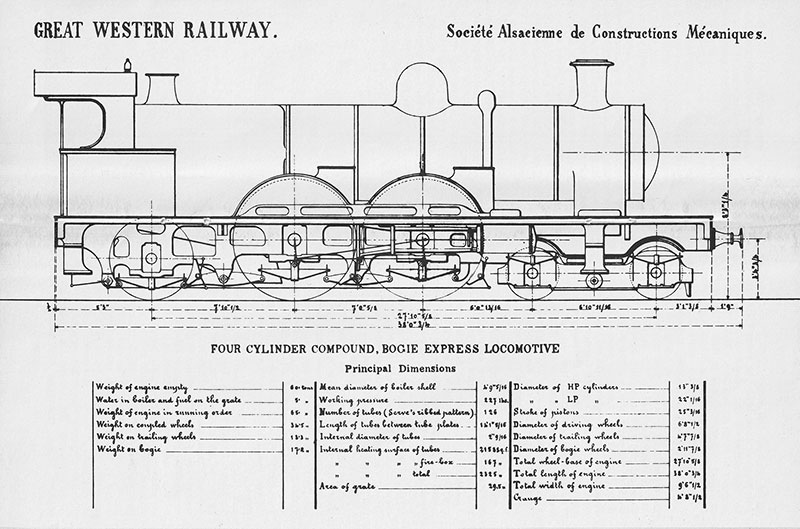
A works drawing of La France
This had quite the effect on the 12 young von Glehns as well. Women's suffrage campaigner Louise Creighton was one of his siblings as was Wilfred de Glehn, the British painter. His brother Alexander was a coffee merchant who also built narrow gauge railways in France. This was the very apex of the Victorian era – art, philosophy and science carving out a brave new world.
Into all of this stepped Alfred. He became one of the greats of railway engineering. He emigrated to France to work for Société Alsacienne de Constructions Mécaniques (the Alsatian Corporation of Mechanical Engineering), or SACM. When he emigrated, the von became de to better fit in with his fellows, a move that the rest of his family followed suit with after WWI broke out. German sounding associations were not well thought of post-1914…
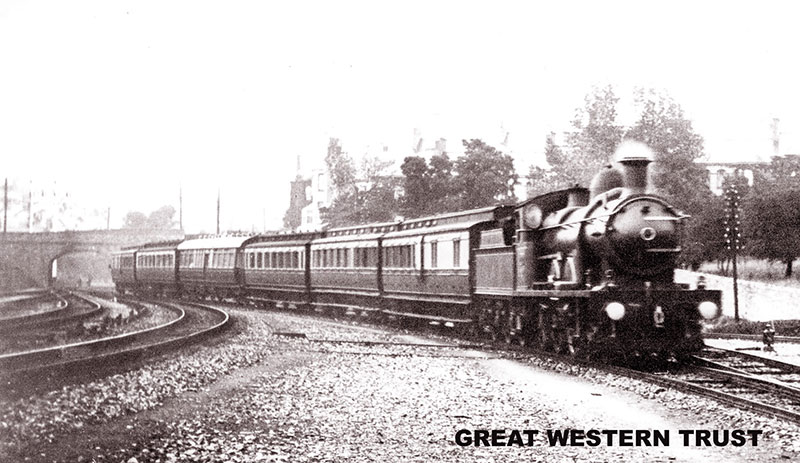
La France arriving at Plymouth with the first run of the Cornish Riviera Limited from Paddington on 1 July 1904
SACM was set up by André Koechlin in 1826 originally to produce textile machinery, but it soon diversified into the construction of railway locomotives. The product that they were best known for in the latter part of the 19th and early 20th century was de Glenn's compound design. The German annexation of the Alsace-Lorraine region of France in 1871 as a result of the Franco-Prussian War makes the company history too complex for this forum, but you will know it today by the name of Alstom. Due to the annexation of Alsace-Lorraine by the Germans, another SACM factory was set up at Belfort in France.
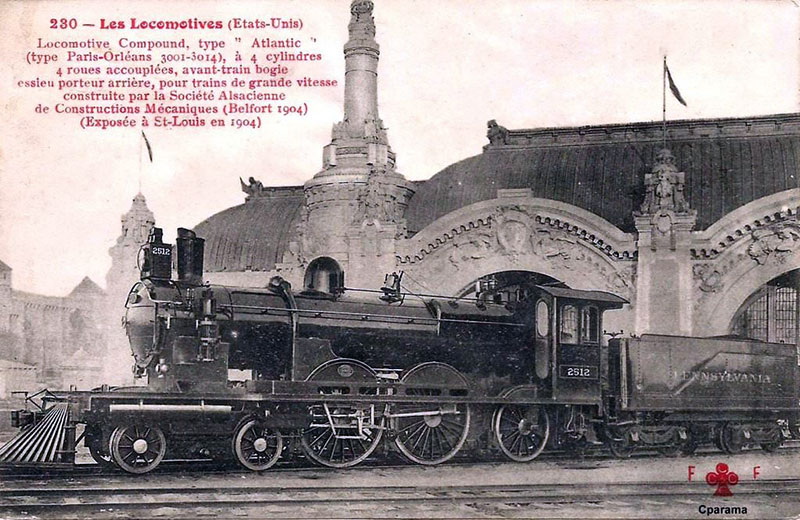
A de Glehn compound built for the Pennsylvania Railroad in the USA
A compound locomotive is one where there was an attempt to make steam engines of all sorts more efficient. The basic plan being that in a regular steam engine, the steam goes into the cylinder, expands and pushes the piston and is then exhausted to the atmosphere. The steam being exhausted still has energy to use and the compound engine basically uses the steam again. It works on the principle that pressure is a force divided by the area it is pressing against. If you do your maths correctly, what you can do is to use the steam at full pressure on a smaller piston and then pipe it through to a second, larger piston and use it again. The increase in surface area meaning that even though the steam has less energy in it, the force it applies is the same as before.
These types of engine were popular in ships, where steadily increasing piston sizes were far easier to fit in. Triple expansion (three different cylinder sizes) was not uncommon. The railway locomotive needed to be a little more compact, however, and two different cylinder sizes were more usual. The Nord Railway took delivery of the prototype and two production versions of de Glenn's new locomotive in the last quarter of the 19th century.
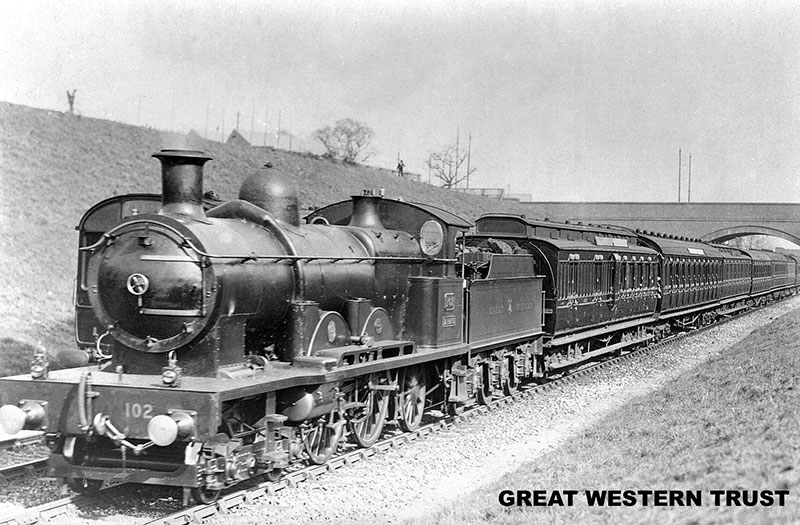
La France at the head of a GWR train
The first two engines were of the 4-2-2-2 wheel arrangement. The two sets of cylinders drove independent driving wheels. Gaston du Bousquet, chief engineer of the Nord, helped improve the design and under his direction, the third loco had the two driving axles coupled together to make a 4-4-2 or Atlantic design. He also made the mechanism more accessible and the design was set.
A lovely tale, but where does the GWR come into all this? When Churchward took over Swindon in 1902, he was building up his standardisation policy and he was interested in comparing his new 2-cylinder 4-6-0 non-compound, or simple, engines with a compound of similar size and shape. This is why he ordered three locomotives of the de Glehn type from the Belfort factory to make comparisons. They were all Atlantics, the first joined the railway in 1903 and became No 102 La France. She didn't look much like a GWR engine as, although she used a standard GWR tender and chimney, she had a very foreign-looking boiler and cab and was painted in a black livery.

La France in the factory at Old Oak Common
La France worked services initially that were being performed by the Atbara and City class 4-4-0s (like preserved No 3440 City of Truro). She even hauled the first-ever Cornish Riviera Express on 1 July 1904. She was soon joined by two slightly larger versions of the same design which became No 103 President and No 104 Alliance. To test them on his railway against his latest technology, Churchward had some of his new 4-6-0s, which went to become known as the Saint class, produced as 4-4-2 Atlantics. This enabled a fair comparison of the merits of the de Glehn compounding alongside the simple Saints.
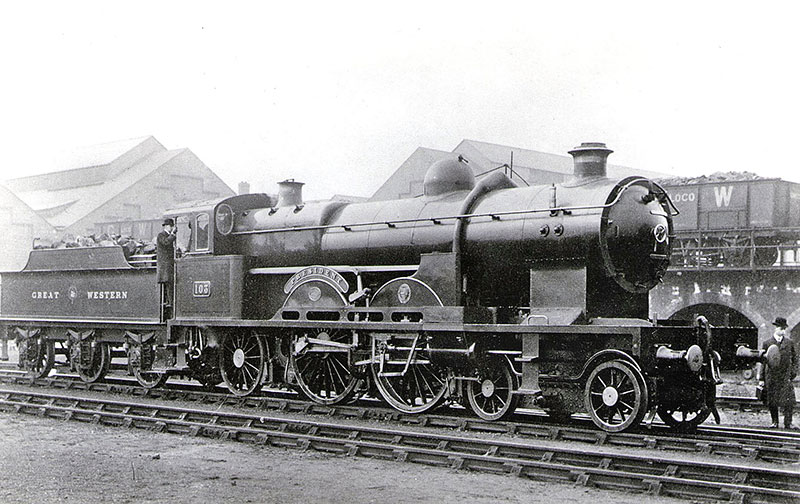
No 103 President at Old Oak Common
The compounding was found to have little, if any, advantages for the extra complexity in the UK, especially when compared to the highly efficient Saints. They did influence another GWR type. No 40 (later No 4000) North Star was the prototype 4-cylinder express passenger engine, built in 1906 and like some of the Saints, built to be convertible from 4-4-2 Atlantic to 4-6-0 design, again to allow a more direct comparison to the French engines. The cylinder layout was copied (although not compounded) with the inner ones placed as far forward as was possible and the outer ones placed around the level of the rear bogie wheels. Another repeated feature was that that the outer cylinders drove the rear driving wheels (on the 4-4-2) and the inner drove the leading driving wheels (called divided drive). And the bogie, which we discussed last time!
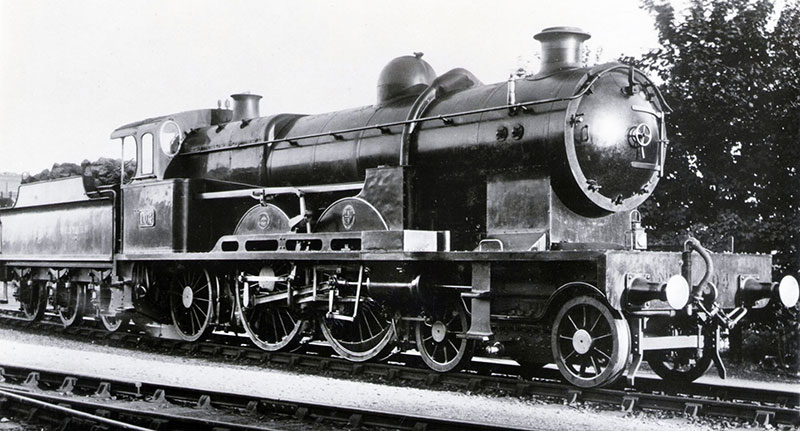
No 104 before the nameplates Alliance were fitted
All the experimentation lead to two of the most influential locomotive types of the twentieth century. The Saints and the Stars. All those engines built by Swindon as 4-4-2s eventually were converted to 4-6-0s, leaving ‘The Frenchmen’ as they became known, to soldier on. They were obviously well thought of as they were rebuilt several times, including the fitting of Standard No 1 boilers when their own became life expired. They in fact worked until withdrawal in the late 1920s. The fact that they lived full and useful lives despite being oddballs in a standardised world says a great deal about their usefulness and is of great credit to de Glehn, du Bousquet and SACM.
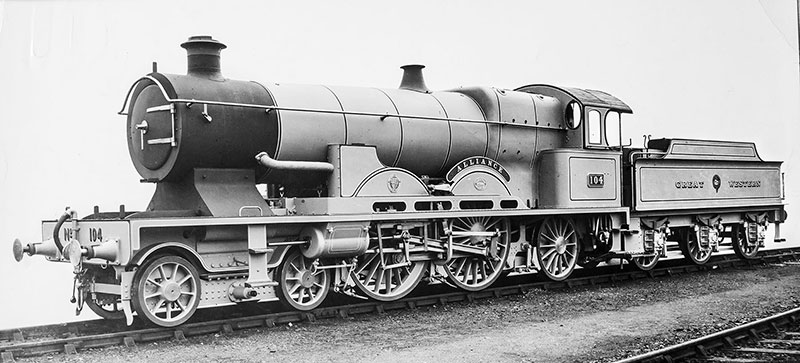
No 104 fitted with a Swindon Standard No 1 boiler
Alfred de Glehn lived until the ripe old age of 88. His house was commandeered as the German district HQ during the first world war. After the first world war, Alsace became French again, only to be invaded by Germany in 1940 and returned to France at the end of the second world war. Alfred however never lived to see this, passing away on the 8 June 1936. His engineering prowess lives on. Several de Glehn compounds of various designs are preserved in his native France and in the wider world. There is also a little bit of de Glehn in many of the 20th century GWR engines. Let's return to those Stars next year shall we? There's an anniversary coming up you know…
*He changed his name a bit. With apologies to George Lucas….
FRIDAY 2 DECEMBER
French Bogies
No sniggering at the back about that title now… Time we look at a little steam engine anatomy again. This time, those four little wheels out front on a steam engine*.
Firstly, why do we need to have extra wheels on steam locomotives? There are two main reasons. The first is obvious. If the engine has a long frame, it needs support to carry that frame. So why don’t we just add extra driving wheels? There is a limit to how long the coupled wheelbase can be. The fact that the driving wheels are linked with solid rods is the issue. You can gain a little side play in the axle bearings and by fitting semi-hemispherical bearings to the rods.
There is a limit to this too. 10-coupled wheels (5 either side) were seen in the UK on engines like the famous British Railways Standard 9F heavy freight class. Amongst other foreign railways there were a few successful 12-coupled engines – the Union Pacific Railroad in the USA produced the 9000 class 4-12-2s which were just one example. That was the limit. The Soviet Union tried one 14-coupled locomotive called the AA20. It basically fell off the track at any opportunity by either spreading the rails apart or by ruining any set of points it ever tried to negotiate.
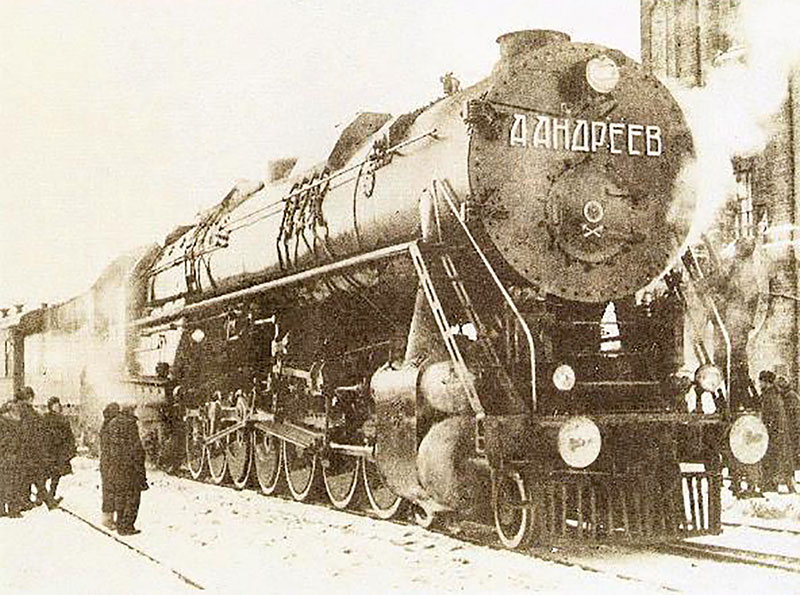
The Soviet Union’s AA20 4-14-4
In the collection at Didcot, we have examples of four different ways of dealing with the problem. These are rigid frames, pony trucks and radial trucks (2 wheels) and bogies (4 wheels). Very early locomotives like our replicas of Iron Duke and Firefly only have one driving axle. The carrying wheels either side are fixed in place and don’t swivel. This is possible when your locomotive isn’t very long. It will still easily go round curves. Make that rigid wheelbase too long and we end up in AA20 territory!
The four-wheeled solution for locomotives is therefore to have an extra set of wheels that is separate from the main frame of the locomotive This technology is known as a bogie in the UK but is known elsewhere known as a railroad truck, wheel truck or just a truck. The usual form of this device is that of a frame with 4 wheels and a central pivot. The wheels on the frame have suspension springing and this can take several forms. On our preserved engines at Didcot** there are three different designs. The simplified plate frame version adopted during WWII, the oddball King version with its inside / outside bearings due to the size of the cylinders on the that beast(!), and finally this beautiful piece of engineering.
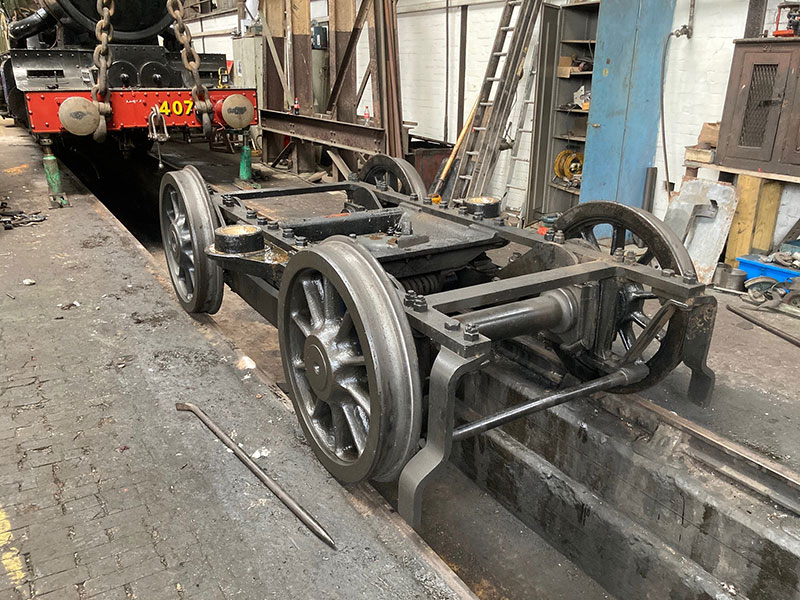
The Swindon/de Glehn bogie from No 4079 Pendennis Castle. We have removed it here to make a few adjustments after the loco’s initial running-in period. Churchward changed the design just enough to avoid those patent payments…
This is from the Churchward era of standardising parts. The Swindon/de Glehn bogie as it is known betrays its origins. In the early 20th century, when Churchward was setting up his standardisation policy, he bought three compound locomotives designed by the English-born French locomotive engineer Alfred de Glehn. These engines were bought to compare compounding (using the steam twice through cylinders of increasing size) to his then new Saint class. One thing that caught Churchward’s eye however was the design of the bogie.

The bogie frame from the front. The two angled sections are the guard irons for the leading wheels. Next in are the guides for the axle boxes and then the massive centre casting. Leading away is the next set of axle bearing guides
When dismantled, it is remarkable to see just how slightly-built parts of the frame look. It is however a really strong and compact design. Just what a growing loco needs! The centre section is the most massive.
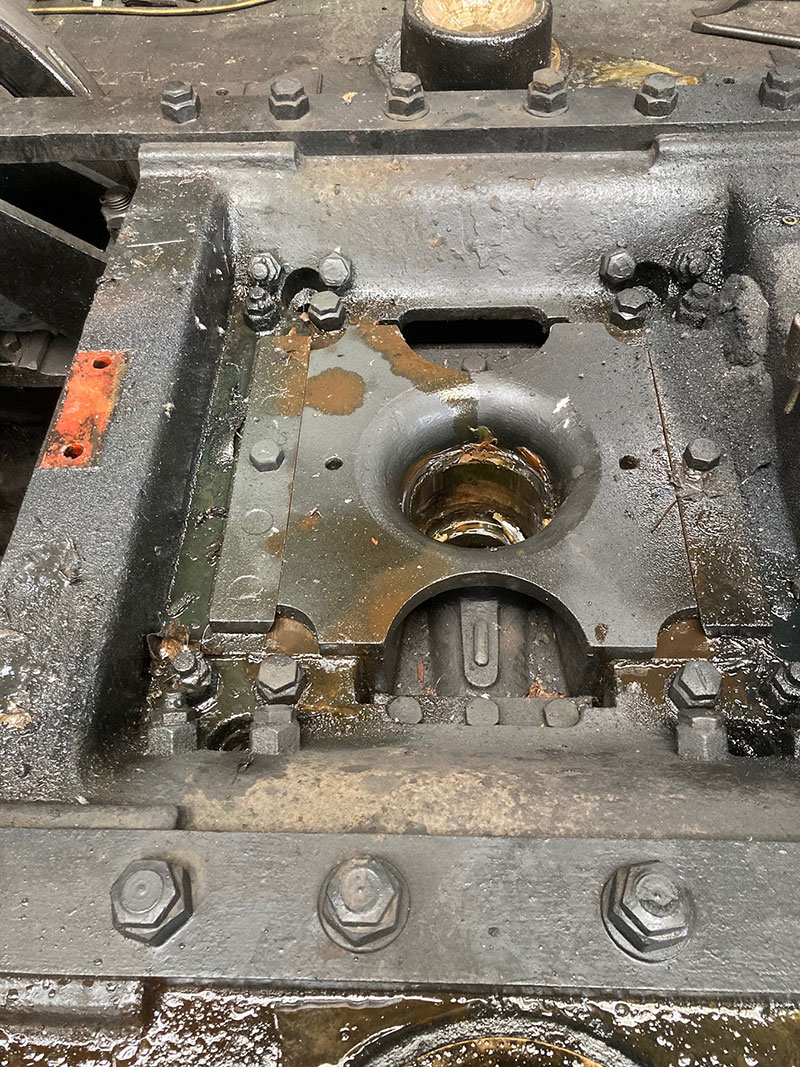
The centre casting showing the main pivot bearing and the slides that allow motion side to side. This is before the attentions of the crack young volunteer cleaning squad!
This contains the bearing that receives the pin about which it pivots on the engine. This bearing is not solidly mounted to the bogie frame – there are slides to allow a limited amount of movement side-to-side. This is controlled with damping springs. Either side of this are two brass bearing platforms.
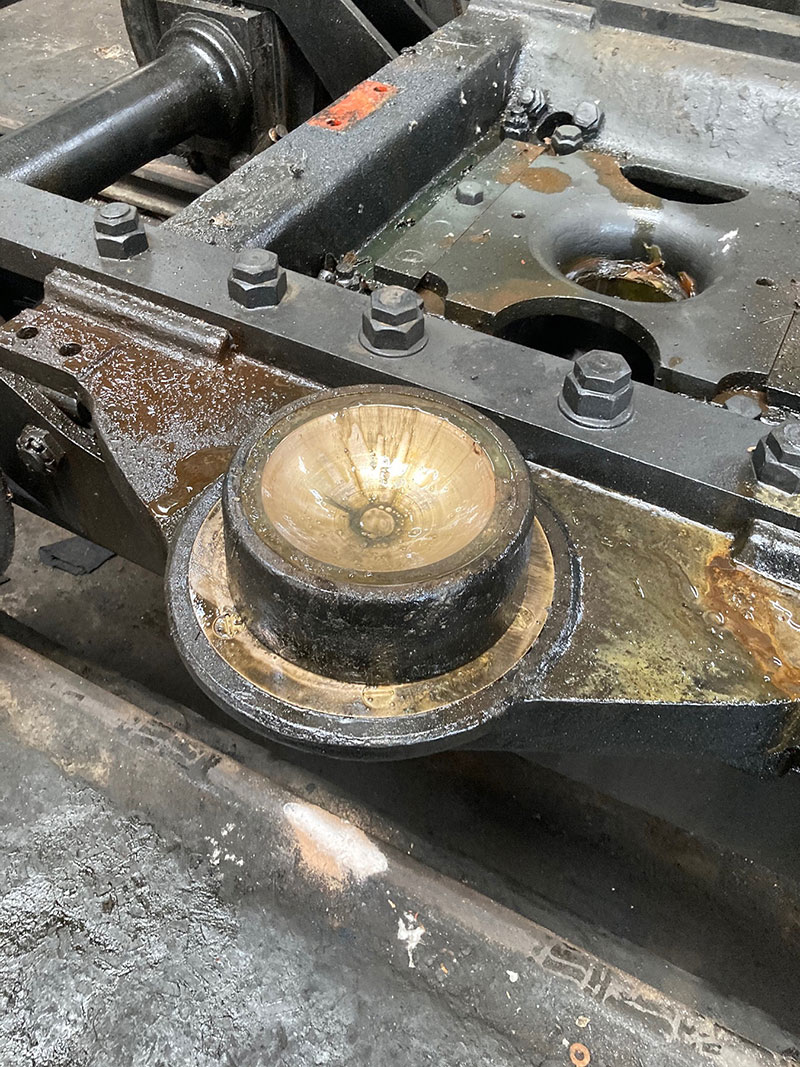
The semi-hemispherical bearing cups. Also pre-cleaning squad. The issue is an awful lot of oil and gunge from the oil in the motion and the steam oil in the steam from the cylinder drain cocks. They get really mucky, really fast!
There are semi-hemispherical cups that rest on these and receive a corresponding bearing mounted to the sides of the engine.
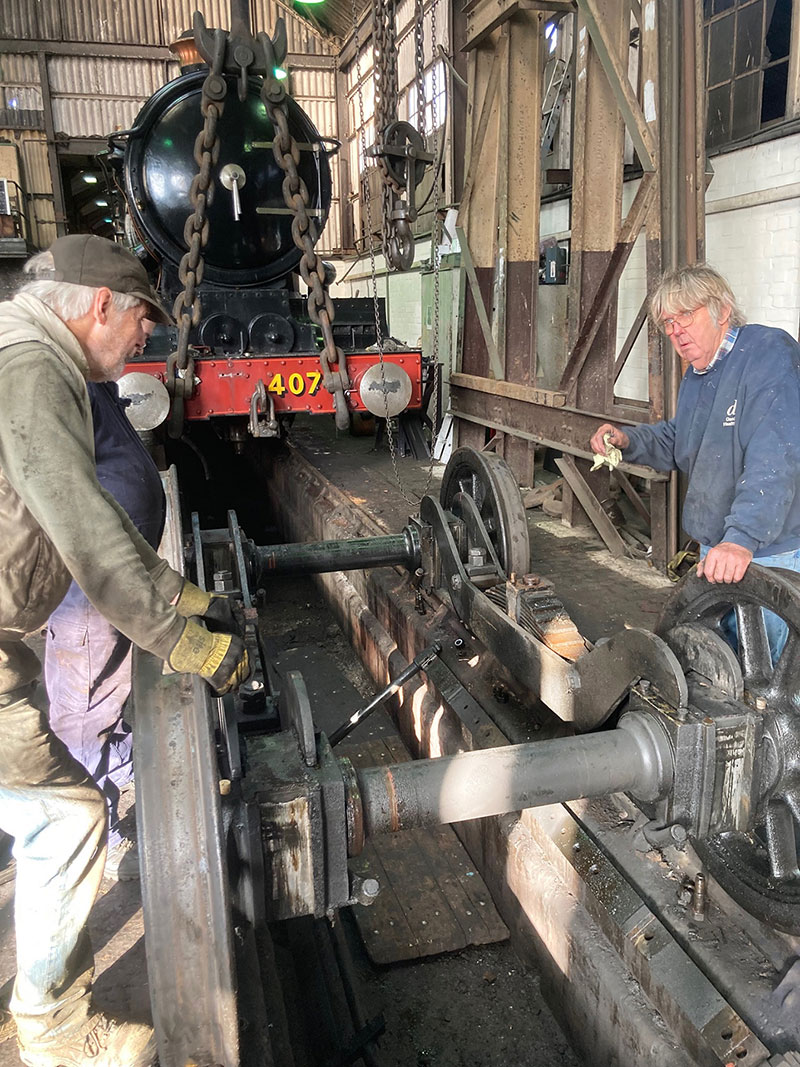
This shows No 4079 stalwarts Clive Sparling (left) and Angus Pottinger (right) examining the springing set up. The springs can be seen in their swan necked carriers which are resting on top of the axle boxes
The frame extends out fore and aft and provides the axle box guides to locate the wheels and allow them to slide up and down in their bearings. Here’s where the clever part comes in. There are just two large springs, one either side. These are sandwiched between two beams that have a swan neck type end on them. These ends rest on top of the axle boxes. The two outer ends of the spring are tightened and loosened with the operation of bolts and lock nuts and the centre of the spring rests under the outer edges of the centre casting, thus providing the springing.
It’s a highly effective and economical design that was used on Stars, Castles, Saints, Halls, Granges and Manors. What was up with Pendennis Castle's? We found that a few of the tolerances in the axle box guides were just a little tight and it wasn’t allowing it to move as freely as we would like. Thanks to Ali Matthews and Pete Gransden’s machining skills and the loco team as a whole stripping it down and putting it back together, she is now as fit as a fiddle. No 4079 will now sleep through the winter to emerge in 2023 – the 100th anniversary of the first Castle being completed. What a time to have a boiler certificate!
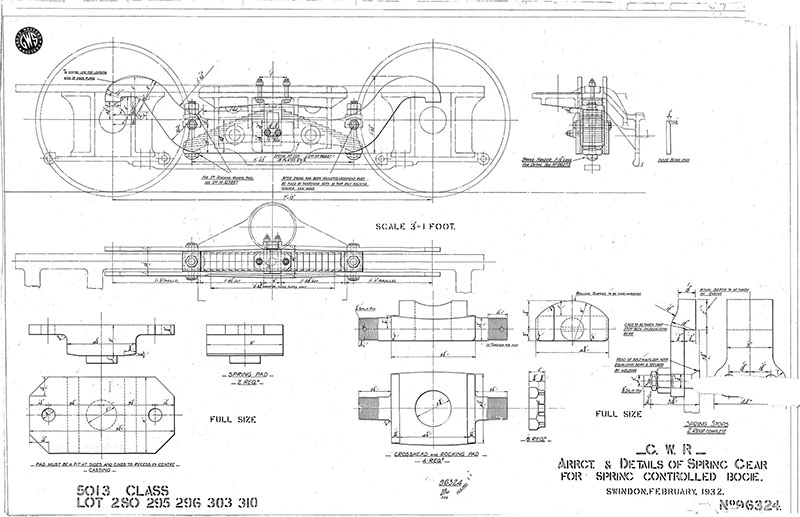
PS Special thanks from the locomotive department goes out to our young volunteers who put in a great deal of effort into cleaning all the parts of the bogie so that Ali and Pete could have a clear run at doing the machining during the week for us. Well done and thanks to everyone involved!
*Some of the photography isn't very good. That's because they are mine. Sorry! We are constantly spoilt by the archive and Photo Frank’s amazing work…
**There was a very interesting version of the Dean centreless bogie design fitted to some GWR locomotives. It’s exactly what it says on the tin, there’s no centre pivot pin. The bogie is connected to the vehicle via what is known as scroll arms on the outside of the bogie.
Didcot Railway Centre Newsletter
Stay up to date with events and what's going on at Didcot Railway Centre.
You may unsubscribe at any time. We do not share your data with 3rd parties.